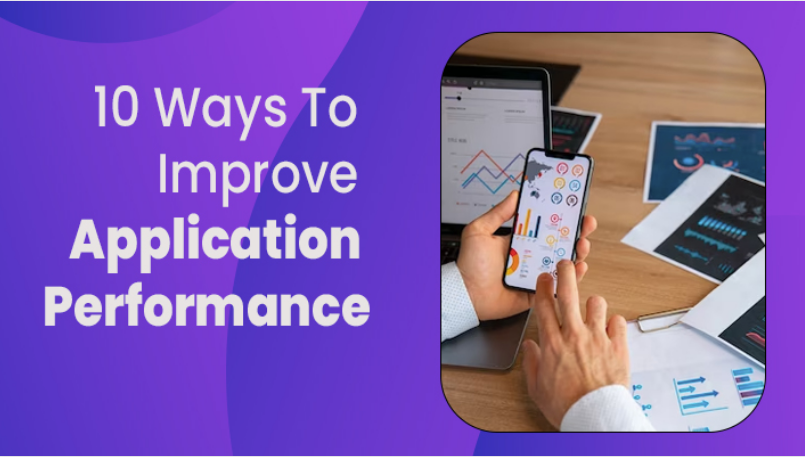What is Application Performance?
Application performance refers to the efficiency and effectiveness of a software application in delivering its intended functionality while meeting certain performance expectations and user experience standards. It encompasses various aspects that determine how well an application operates, including speed, responsiveness, stability, resource utilization, and the overall user experience
Improving application performance is crucial for delivering a seamless user experience and ensuring that your software operates efficiently. Whether you're working on a web application, a mobile app, or a desktop program, there are numerous strategies you can employ to boost performance. In this comprehensive guide, we'll explore 10 ways to enhance application performance, providing detailed explanations and practical tips for each method.
Here are some key components of application performance:
1. Code Optimization
One of the fundamental ways to improve application performance is through code optimization. This involves making your code more efficient, reducing redundant operations, and minimizing resource consumption. Some key techniques include:
Algorithm Efficiency: Choose the right algorithms and data structures for your tasks to reduce time complexity.
Code Profiling: Use profiling tools to identify bottlenecks and hotspots in your code.
Code Review: Regularly review and refactor your code to eliminate inefficiencies.
2. Caching
Caching is a powerful technique for reducing load times and database queries. By storing frequently accessed data in a cache, you can quickly serve it to users without the need to fetch it from the source. Consider these caching strategies:
Page Caching: Cache entire web pages to serve them faster.
Object Caching: Cache specific objects or data elements to reduce database queries.
Content Delivery Networks (CDNs): Use CDNs to cache and serve static assets like images and scripts globally.
3. Database Optimization
Databases are often a performance bottleneck. To improve application performance, consider these database optimization practices:
Indexing: Create proper indexes on frequently queried columns to speed up SELECT queries.
Normalization: Normalize your database schema to minimize data duplication.
Connection Pooling: Use connection pooling to efficiently manage database connections.
4. Efficient Resource Management
Efficient resource management is crucial for applications. This includes managing CPU, memory, and network resources effectively. Key strategies include:
Memory Management: Avoid memory leaks and excessive memory consumption.
Connection Management: Close unused network connections promptly.
Threading and Concurrency: Implement multi-threading and concurrency for parallel processing when applicable.
5. Load Balancing
Load balancing is essential for distributing traffic evenly across multiple servers or resources. It ensures that no single component becomes a bottleneck. Consider these load balancing techniques:
Round-Robin: Distribute incoming requests in a round-robin fashion.
Weighted Load Balancing: Assign different weights to servers based on their capacity.
Session Affinity: Maintain user session persistence when necessary.
6. Content Compression
Compressing content before transmitting it to clients can significantly improve application performance, especially in web applications. Use techniques like GZIP or Brotli to reduce data transfer size and speed up loading times.
7. Asynchronous Processing
Implementing asynchronous processing can help your application handle more concurrent requests without blocking. Key areas to consider include:
Asynchronous I/O: Use asynchronous I/O operations to prevent blocking.
Message Queues: Employ message queues to decouple components and handle background tasks.
8. Scaling Strategies
Scaling your application horizontally or vertically is essential for handling increased loads. Explore these scaling strategies:
Horizontal Scaling: Add more servers or instances to distribute load.
Vertical Scaling: Upgrade hardware resources (CPU, RAM) on a single server.
Auto-Scaling: Automatically add or remove resources based on demand.
9. Content Delivery
Leverage Content Delivery Networks (CDNs) to distribute content closer to users, reducing latency and improving download speeds. CDNs also provide protection against DDoS attacks and improve reliability.
10. Monitoring and Profiling
Continuous monitoring and profiling are crucial for identifying and addressing performance issues. Use tools like New Relic, Prometheus, or custom monitoring scripts to:
Track Key Metrics: Monitor CPU usage, memory usage, response times, and error rates.
Profiling: Regularly profile your application to identify performance bottlenecks.
In conclusion, optimizing application performance is an ongoing process that requires attention to detail, regular testing, and a commitment to improving efficiency. By implementing the strategies mentioned above, you can create applications that are faster, more reliable, and capable of handling increasing user demands. Remember that each application is unique, so it's essential to tailor these strategies to your specific use case and continually fine-tune your performance optimizations.

















Post Comments